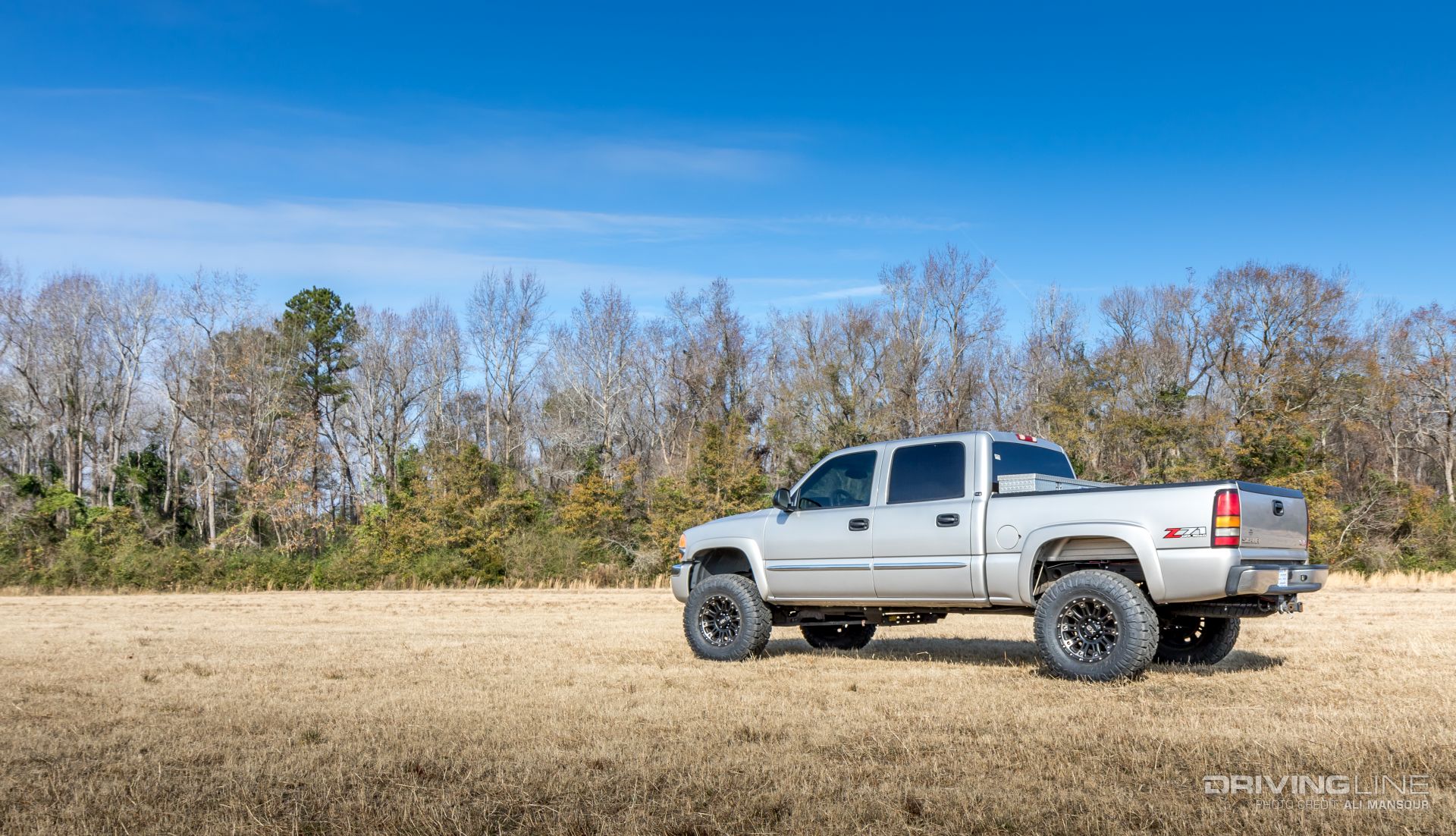Pumping new life into an old truck is a tried-and-trued formula. With new ½-ton trucks venturing into the $50,000 territory, we’re seeing more and more truck owners hold onto their aging pickups. As many car and truck owners are aware, the old saying rings true—if you take care of it, it will take care of you. It was with this in mind that our friend decided to revamp his 2006 GMC Sierra 1500 over trading it in on a newer, albeit more costly, model.
Having owned the truck since new, there were few concerns over the ½-ton’s reliability. Wanting to up not only the look, but the off-road performance of the pickup, he opted for a six-inch Skyjacker Suspension system that would allow him to retain a factory-like ride quality, but make room for the larger treads that would help him in the dirt. While the video above takes you through the transformation, we’re diving even further into the details below.

Getting It Done
Installing a suspension system on a late-model IFS truck is a fairly involved process. Given that the truck would also be getting a differential gear jump up to 4.88s, our friend took the truck to the experts at Low Range 4x4to get the work done.

There are two common independent suspension systems for this generation GMC truck. The first retains the stock steering knuckles, but requires extensive frame drilling to relocate the upper control arm mounts. The second uses a cast steering knuckle such as the one you see here. Going with a new steering knuckle allows you to keep the upper control arm in its factory location, cutting down on install time and complexity.

To accommodate the six inches of lift, new steel crossmembers are added attaching to the stock mounting locations. This allows for the differential to be lowered as well. Since the new steering knuckles raise the tie-rod end mounts, no steering modification is required. However, this owner did opt for the optional Skyjacker steering dampener to help tighten up the steering system.

Helping to control the front suspension are a Skyjacker’s latest line of performance shocks called Black Max. The red polyurethane bumpstops are placed on new mounts to moderate the suspension up travel. One note- once the truck was set on the ground, the owner opted to trim a few layers off of the bumpstop to allow for more upward travel.

The 2006 model year GMC still uses a torsion bar to suspend the front of the vehicle. These long metal bars use torsion keys to adjust bar tension, which can alter the preload and ride height of the truck. To ensure the bars were not working at an extreme angle, drop brackets were bolted to the frame, which allowed for the stock torsion bar crossmember to be lowered as well.

This particular system came with a complete spring replacement pack. This was ideal for the 11-year-old truck, as the original leaf springs were well worn.

Going with a full replacement spring pack adds a bit of extra work as the forward bolt on the driver’s side of the framerail requires you to drop the fuel tank to access it. Despite this, we prefer a spring replacement over adding an additional lift block. Dampening the system are nitrogen-charged Black Max series shocks that are valved specifically for the ½-ton truck.

The Right Footprint
Getting the right wheel can be tricky on some IFS suspension lifts. This owner opted for a 17x9 XD829 HOSS 2 wheel from KMC. It’s fit with 4.53 inches of backspacing, which worked perfect to clear the suspension components.

Since the truck is a daily driver, tow rig and occasional dirt explorer, it needed a tire that was capable of wearing many hats. After looking at his options, the Nitto Ridge Grappler in a 35x12.50R17 was the top pick. Known as an aggressive all-terrain tire, the Ridge Grappler has proven that it has what it takes to survive off-road and the load capacity to work perfect on towing applications.

In Line
Before the truck could leave the shop, it was fine-tuned on Low Range’s Hunter alignment machine. While it may seem like a small part of the job, proper alignment is critical for ensuring the truck will handle correctly. It also ensures that the tracking is straight so you won’t cause unnecessary wear or chop to your new tires.

Leveled Out
Six inches of lift was a noticeable boost on this ½-ton, but not enough to kick it out of the realm of practicality. With the torsion bar configuration, there is a bit of adjustment in regards to the front end height. This one is setup near level.

Retaining the stock front bumper will require a slight amount of trimming if you opt for the same tire and wheel configuration shown here. Removing that small amount from the lower portion of the bumper and valence allows for plenty of clearance, even while doing a bit of spirited driving off-road.

To ensure the 35-inch-tall treads wouldn’t drain all of the performance from his pickup, the differentials were fit with a set of Nitro Gear & Axle 4.88s. Paired with the new gear set was a programmer from Superchips. The two power upgrades both helped to keep strain off of the transmission and make the jump from the stock tire size to the new Grapplers less dramatic.

Overall, the owner is extremely pleased with the new setup. For less than the fraction of the cost of a new truck, he was able to breathe new life into his “old” truck.
